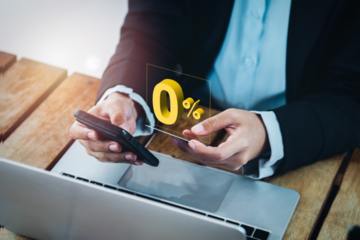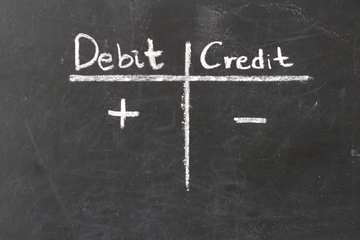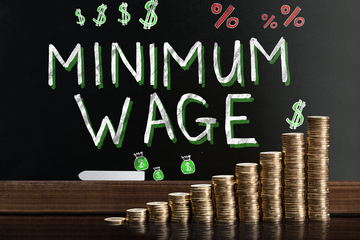Since the end of the 17th century, checks have been commonplace in Western civilization. While innovative digital payments — such as peer-to-peer (P2P) payments and digital wallets — have dominated the financial scene over the last decade, physical checks are still in use. If you've recently received a check, you may want to convert this paper IOU into cash. However, not having acceptable identification can make it difficult. Fortunately, we've outlined what you need to know about cashing a check without an ID.
Understanding the Process of Cashing a Check
Cashing a check is relatively straightforward — as long as your ducks are in a row. The first step is to take the check to a bank, credit union, financial institution, or any other check-cashing facility. If you have a checking or savings account, you can deposit the funds into the account. Before you do either, you will endorse or sign the back of the check.
If you cash the check at your bank or credit union, there typically will not be a fee. On the other hand, many banks and credit unions charge check cashing fees for non-members. Additionally, most check-cashing facilities charge a fee to cash checks, no matter affiliation. The fee levied can be up to 12% of the check's amount.
What Types of IDs Are Required to Cash a Check?
While check-cashing fees can vary, retailers and banks will always verify you are authorized to cash the check. To do so, institutions require you to present a primary form of identification. Primary identification documents prove your identity with information like your name, photograph, and date of birth. The information on the primary ID is compared to the name on the check. The teller or customer service professional must be able to verify your identity to cash the check. Examples of the primary IDs include:
- Driver's license
- State-issued ID
- Military ID
- Passport
Driver's License
Driver licenses are one of the most common types of IDs in the U.S. This official document proves your identity and verifies your authorization to operate a vehicle. Driver licenses will display:
- Photograph of you
- Your age
- Legal name
- Physical address
- Date of birth
- Signature
Other State-Issued IDs
If you don't drive or operate a vehicle, state-issued identification is the next-best option. State-issued IDs include most of the same information as a driver's license but don't authorize you to operate a vehicle.
Military Identification Card
Another form of primary identification is the military identification card. Military IDs are issued to active military members, retired members, and dependents.
Passports
Passports are official travel documents issued by the Department of State. Your passport is an acceptable type of primary identification.
Secondary IDs
A secondary ID is a supplemental document that can help verify your identity. Examples of secondary IDs include:
- Social Security Card
- Firearms Permit
- Government Employee ID
- Employment ID
- U.S. Birth Certificate
- Health Insurance Card
- Auto Insurance Card
Can I Use a Secondary ID?
Most financial institutions and check cashing facilities will require a primary ID to cash a check. However, some will allow you to use a secondary ID to cash a check. It's best to call the financial institution or visit their web page to confirm their check-cashing policies.
How to Cash a Check Without an ID?
If you do not have an acceptable form of ID, there are still ways for you to cash a check. Let's look at a few different options you can use to cash a check without an ID.
Use Your ATM
One of the best ways to cash a check without an ID is to use an ATM. For example, if you have a checking account at Bank of America, you can go to one of their ATMs, insert your card, and choose to deposit a check or get cash back. While using an ATM to cash a check without an ID can be easy, there may be restrictions on how much you can receive immediately. Some banks may only allow you to withdraw a portion of the check's face value and place a hold on the remaining amount.
Use a Mobile Check-Cashing App
Certain mobile apps allow you to deposit and cash checks without ID. For example, PayPal may cash checks instantly for account holders and offer instant access to the funds.
Use Your Bank's Mobile App
Some banks offer mobile apps that allow you to cash checks, such as:
- Bank of America: Android. iOS.
- Chase Bank: Android. iOS.
- First Midwest: Android. iOS.
- Wells Fargo: Android. iOS.
- Santander: Android. iOS.
- US Bank: Android. iOS.
How to Cash a Check without a Bank Account
Here are a few ways to cash a check without a bank account.
Go to the Issuing Bank
The fastest way to cash a check without a bank account is to take it to the bank where it's drawn. When you do, the teller will verify your identity, and the check writer has funds to cover the withdrawal before giving you cash. Some banks may charge a check-cashing fee for non-customers.
Retailers
Many big-box retailers offer check-cashing and money services. Major retailers like Kroger, Walmart, and Safeway may cash your check for a fee.
Check-Cashing Stores
Another option to cash a check without a bank account is to visit a local check-cashing store. While convenient, check cashing stores tend to be a more costly option in terms of fees.
Alternatives to Cashing a Check
If you're looking to avoid the inconveniences and potential costly fees associated with cashing a check, there are many alternatives to cashing a check.
Ask for a Different Payment Method
One solution is to ask the payer to use a different payment method. Whether it's cash or peer-to-peer payment apps, many payment methods do not require an ID or account.
Open a Bank Account
If you do not have a bank account, consider opening one with a bank or credit union. Doing so can make it much easier to deposit money and manage it. If you are declined for a bank account because of negative items in your history, look for a second-chance checking account. Second-chance checking accounts allow you to open a checking account even with a negative banking history.
Use a Prepaid Debit Card
Another alternative to cashing a check is to use a prepaid debit card. In addition to setting up direct deposit, most prepaid debit cards allow you to deposit checks at local ATMS or through mobile apps. Then, you can access the funds.
Sources
- Fin - Checking out: A brief history of checks
- How to Endorse a Check & What Check Endorsement Means | Huntington Bank
- Primary and secondary identification documents – ID.me Help Center
- Welcome to LawHelp.org/DC | A guide to free and low-cost legal aid and services in Washington, D.C.
- Driver’s Licenses Contain Too Much Personal Info to Use at a Bar
- Military ID Cards Eligibility and Access | Military OneSource
- What is a Passport Card?
- Passport Card vs. Book: 4 Key Differences - NerdWallet
- What Is a Third-Party Check? | Nasdaq
- 5 Ways To Cash A Check Without A Bank Account | Bankrate
- What Is Second Chance Banking? - Experian
- How Can I Use a Prepaid Debit Card?



